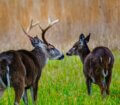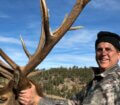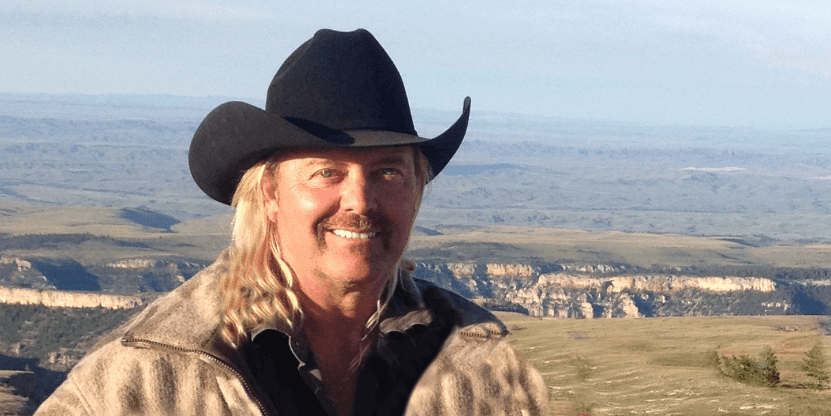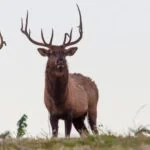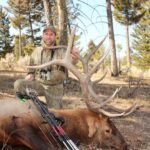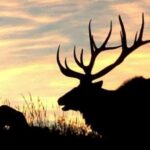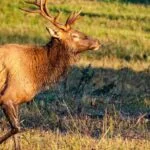Editor’s Note: “Colorado Buck” Ward lives in Texas on his cattle ranch. He’s been hunting and guiding elk since 1985 and knows what’s required to hunt bull elk successfully.
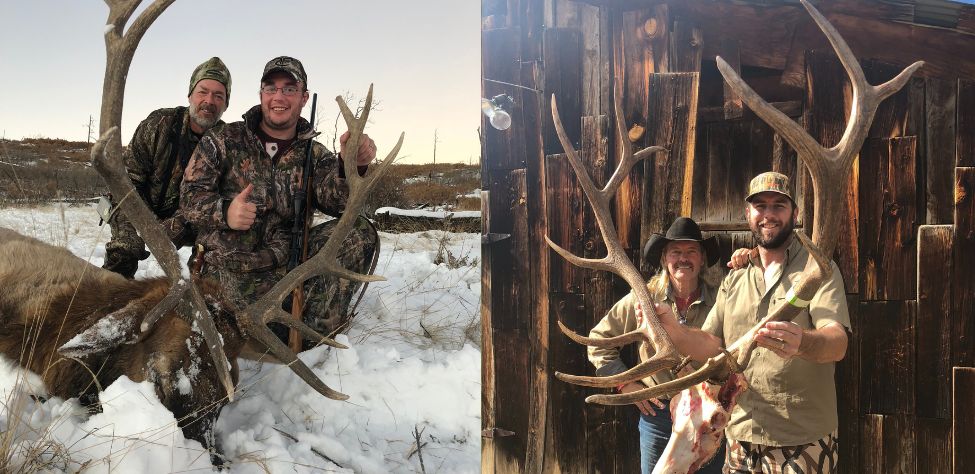
“I primarily hunt in New Mexico,” Ward says. “The ability to draw a tag and hunt a trophy-sized elk is better in New Mexico than in any other elk state. Drawing an elk tag in Arizona is very, very difficult. I’ve applied for 21 years for an Arizona elk tag and haven’t gotten one yet. Colorado offers hunters plenty of access to public lands, and drawing an elk tag there is easy. But the trophy quality of the bulls is a direct reflection of that. If you hunt in Colorado, several other people hunt there too, and there are not many trophy animals. Utah is similar to Arizona, offering plenty of public ground to hunt, but drawing a tag is fairly difficult.”
What about Elk Calls?
“Elk hunting has changed drastically from how it was conducted in the late 1970s and early 1980s,” Ward emphasizes. “During that time, elk calls were only heard about and used by a few hunters. I’ve gotten out of my truck and opened a squeaky gate to go into some land I was planning to hunt, and a bull would bugle. One time I called a 4×4 bull in by opening and closing a rusty gate.
“Today, in almost every elk state, you see hunters driving four-wheelers or pickup trucks and blowing elk bugles. These hunters educate the elk so that when they hear a four-wheeler and a bugle or a truck and a bugle, they’ll often turn and go the other way—bull elk bugle to call the cows to them. However, today, elk calls have been so abused and used so often that when elk hear a call from motorized vehicles, they’ll go the other way.
“In the late 1970s and early 1980s, calling in 30–40 bulls in one season wasn’t uncommon. Many times, when we would call, we’d have multiple bulls coming into us simultaneously. I have had seasons where I’ve called in 50 bulls. Nowadays, we usually call in 10–12, maybe 15, bulls in a season for our clients while hunting large tracts of private land. On those private lands, you’ll often have resident elk herds versus a public elk herd. Many Coloradans believe that anytime you’re hunting elk on public lands, the process is similar to hunting a turkey or a coyote on public lands. Many, many hunters have educated them, and they’re difficult to take. Usually, the bulls you get in places like that won’t be mature.”
Where Ward Hunts Elk Today
Ward has two ranches, side by side, that contain 32,000 acres adjacent to Vermejo Park, which is about 550,000 acres owned by Ted Turner. Vermejo not only houses elk but also wild horses, bears, turkeys, and all types of wildlife. The Vermejo Park elk receives little hunting pressure and is a resident elk herd. “I believe many of the elk in Vermejo Park never leave the park,” Buck reports. “The private land I hunt borders Vermejo Park for 25–30 miles.”
What Kind of Hunting Client Ward Prefers
When asked what kind of client he likes to guide, Buck explains, “I prefer to guide a hunter who comes to experience the hunt. For many hunters, an elk hunt is the hunt of a lifetime, and we try to provide a great hunt for every client we have. But remember, a great hunt doesn’t always result in taking a bull. We like working with hunters who want to enjoy a traditional, honest Rocky Mountain elk hunt where you hike, walk, stalk, call, and hunt. They’re the real hunters.

“The hunters who come to camp with notebooks, pencils, and measuring tapes and say, ‘I’ve got to get an elk, and I want one this size,’ don’t need to go hunting. If a hunter wants that kind of elk hunt, there are enclosures available where the owner will guarantee a bull the size you want to take. You won’t hunt long to harvest him. However, if you want to experience a real Rocky Mountain elk hunt, then that’s what we offer our clients. We must be doing something right because to book with us, you usually have to plan two years.”
What Size Elk Ward Finds for Clients
As for the size of elk Buck tries to find for his clients, he says, “We like to harvest mature bulls, which are usually 6×6 bulls since a bull like that will score 300 inches or better. Most hunters are excited to take a bull that size. We’ve harvested bulls that score 340 inches, 350 inches, and 370 inches. Those bulls are special, and we don’t see them every year. The biggest bull one of my clients has taken was 380 inches, which is a very exceptional trophy. If a hunter enjoys the hunt and is satisfied with how the hunt goes, that’s more important to us than the size of the elk’s rack.
How Ward Teaches Clients about Elk
“I don’t try to teach my clients how to elk hunt unless they ask,” Ward reports. “If a client says, ‘Why are we doing this?’ or ‘Why are we sitting up here like that?’ I’ll be glad to tell him everything I know. Even seasoned hunters often ask, ‘Why do you use a glunk call?’ or, ‘Why do you not call at all and use foot noise to bring in a bull?’ I’m happy to tell them anything they want to know. But I also realize that perhaps they haven’t come on this hunt to listen to me; they’ve come on this hunt only to try and take an elk. However, if they want to know why I do what I do and when I do it, I’m more than happy to share that information with them.
“Rocky Mountain elk hunting is a heritage with plenty of history. Being a part of that history and remembering the people who have come before you, seeing beautiful terrain, and possibly hearing and seeing bull elk—that’s the value of a Rocky Mountain elk hunt. I believe hunters should go for the experience of hunting elk and not try to take a bull elk that will score a certain number of inches.”
To contact “Colorado Buck” Ward, call 1-800-355-8247.
Expert Guidebooks on Elk Hunting: Best Sellers
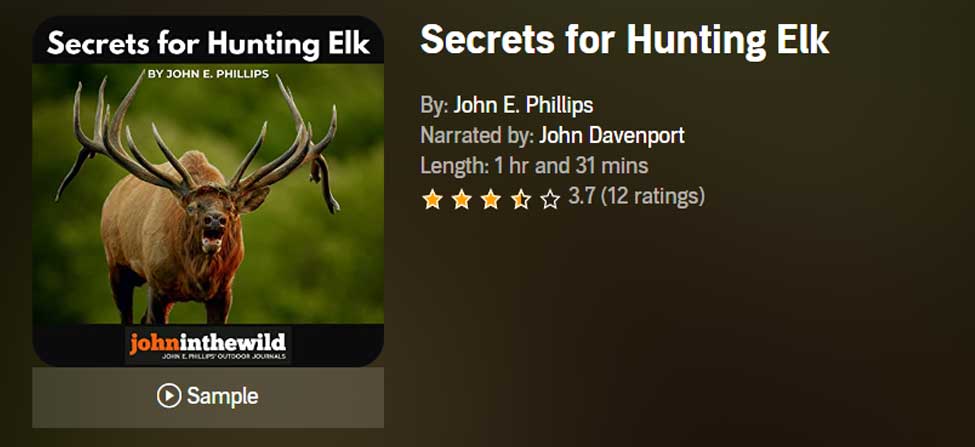
Secrets for Hunting Elk
The quickest, easiest (if there is an easy way), and safest way to find and take that bull elk of a lifetime will be to hunt with a guide.
Chad Schearer, a longtime Montana guide and TV personality, told me, “My hunter is my gun. If I get to the elk, and my hunter isn’t with me, then we don’t take the elk. My job is not only to find the elk but also to help the hunter get to the elk and make the experience as enjoyable as I can for him.” That’s the kind of fella with whom I want to go elk hunting.
An elk hunt can be tough, but it doesn’t have to be so tough that you don’t enjoy it. That’s why this elk hunting book starts with the confessions of an elk guide and with Chad Schearer’s philosophy of what the guide and the hunter’s relationship should be.
A good portion of your success will depend on your physical condition, and Matt Morrett of Harrisburg, Pennsylvania explains how an eastern hunter can get ready physically during June and July to hunt western elk, the animals he describes as, “Like deer or turkeys on steroids.”
Wayne Carlton, well-known elk hunter and TV and video personality from Montrose, Colorado, tells us what types of elk calls to use and what to say to the elk. Mike Miller of Colorado, another elk guide and Mossy Oak video personality, has tactics for the best equipment for bowhunting and gun hunting elk.
You’ll learn helpful strategies and hunting tips in this book, as well as some straightforward hunting methods that will help to make your elk hunt more successful.
“Thanks to the advice in your elk hunting books, I was able to call up a nice 6-point (6X6) bull elk! He was bugling like crazy. I called him in from about a ¼ mile away. Called him into bow range (about 40 yards away). It was a thrill!” ~Rob Brannon
VERSIONS: AUDIBLE & KINDLE
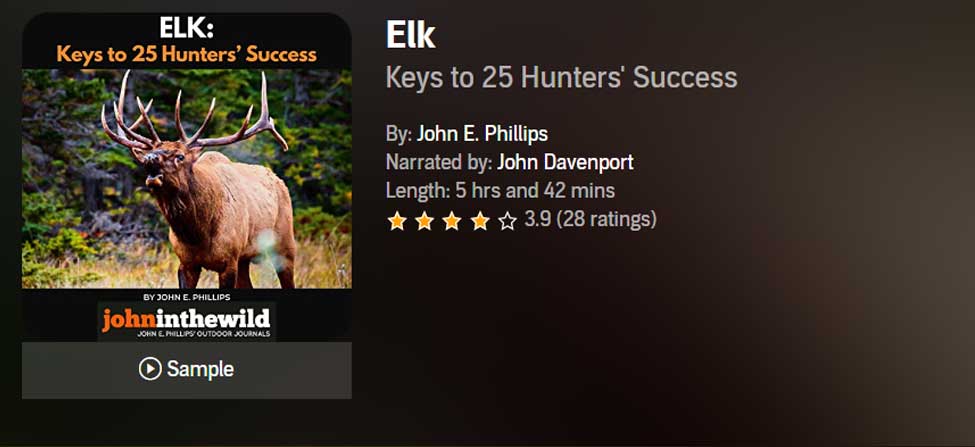
Elk: Keys to 25 Hunters’ Success
Often just one tip or tactic makes the difference in whether you take an elk home to dinner or have to hike back to the truck by yourself. In John E. Phillips’ latest elk book, Elk: Keys to 25 Hunters’ Success, you’ll learn from successful elk hunters the strategies they use to find and take elk.
Many know that the technique that seems to work most often is to hunt where other elk hunters don’t and understand where the elk are before you go on a hunt by studying data from each state, visiting HuntData (see chapter 1), examining maps, and reading postings on elk forums.
This book also tells you how to get ready physically for an elk hunt, including participating in Train to Hunt Competitions, what gear you need to take, how to enjoy a successful do-it-yourself elk hunt, or how to pick the best elk guide for you. You’ll also hear about the X System and the Broken Y System of hunting elk.
Although no one person has all the answers on how to help you find and take your elk, I’m convinced that this book’s outdoors men and women will teach you how to have satisfying elk hunts.
As my friend Karl Badger once told me, “Elk hunting doesn’t get any better than when I ride horses into the high backcountry, see two grizzly bears, hear a pack of wolves howl close to camp all night long, eat plenty of delicious food prepared on a fire and enjoy the company of good friends.”
VERSIONS: AUDIBLE, KINDLE & PRINT
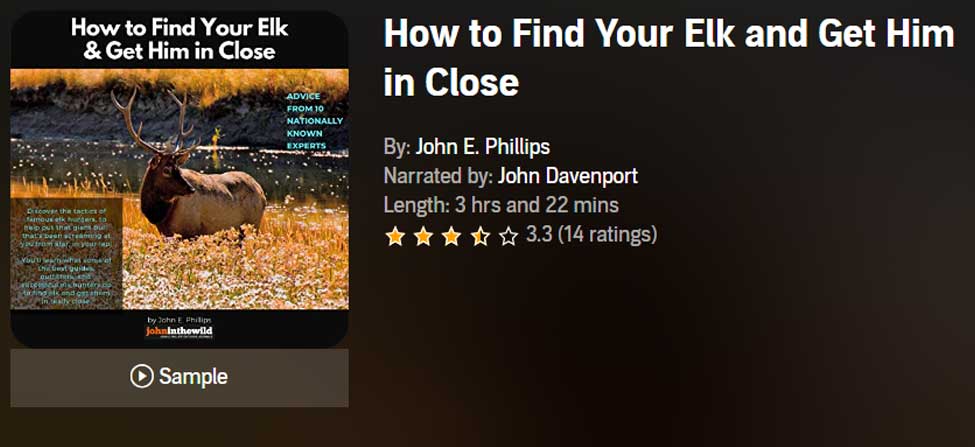
How to Find Your Elk and Get Him in Close will teach you the tactics of 10 nationally known elk hunters, to help put that giant bull that’s been screaming at you from afar, in your lap. You’ll learn what some of the best guides, outfitters, and successful elk hunters do to find elk and get them in really close.
Also in this audiobook, you’ll notice that the majority of the experts call elk to within bow range. We selected numerous bowhunters and bowhunting guides, since the bowhunter has to get much closer to a bull than the gun hunter does – often less than 20 or 30 yards – practically in your lap.
On one elk hunt, I’d heard this bull bugle all morning. My guide had called him within 30 yards, and he was standing just inside black timber. I saw the smoke from his nose wafting out into the icy air less than 30-yards away. All the bull had to do was step out, and I could take the shot with my bow. But then, through no fault of my guide or me, the bull vanished.
The only conclusion I could come up with to understand why the bull I wanted to take with my bow hadn’t stepped out and given me a shot, was because he got raptured. He evidently had left the earth with no trace of himself.
This hunt was when I started wanting to learn more about hunting elk up close. In this book, I’ve tried to find some of the most knowledgeable, experienced, and practical elk hunters. I’ve always found that the best way to learn any outdoor skill, is to either hunt or fish with the best sportsmen in that field.
Often, in elk hunting, that means elk guides, who generally hunt every day of the season and receive a salary for every hunter they guide. So, I’ve put together a group of some of the best elk hunters I know to help us all learn how to find bull elk and get them in close.
VERSIONS: AUDIBLE, KINDLE & PRINT
Tomorrow: Learning More about Elk Hunts

